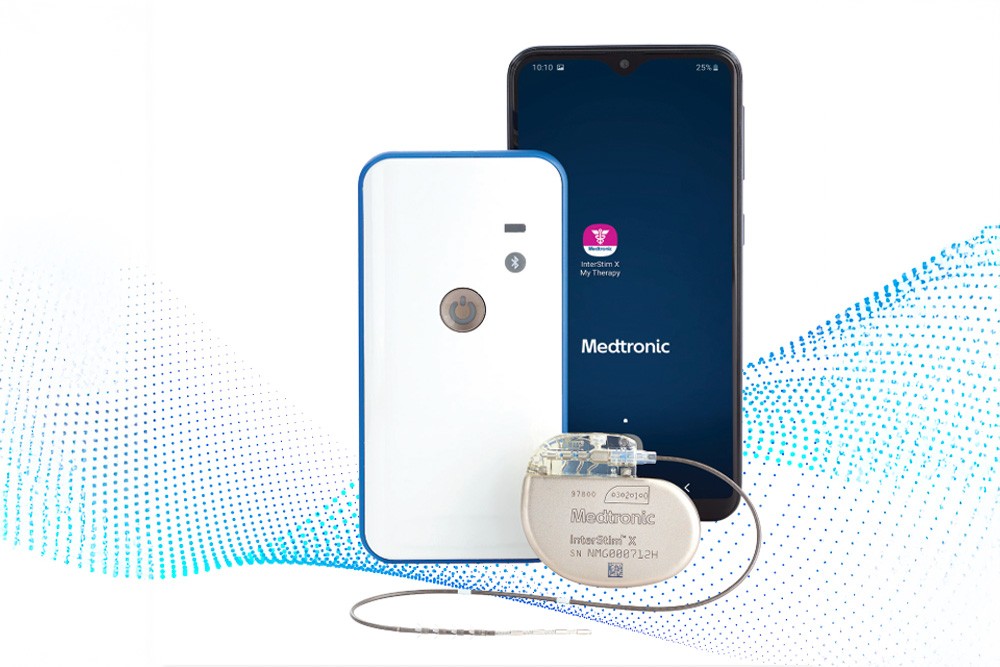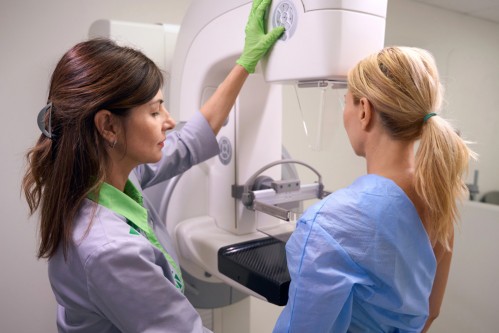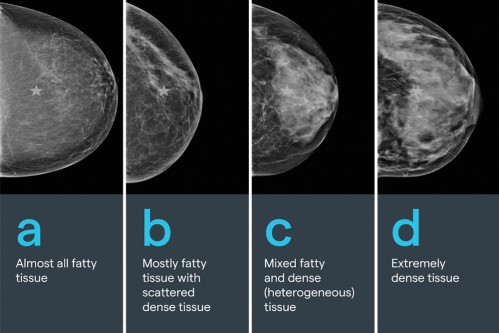
Medtronic Bladder Control Therapy
Evidence suggests that breakdowns in the bladder-brain communication pathway may be a root cause of OAB and non-obstructive urinary retention.1,2,3 That's why conventional treatments may not produce the results you want - they don't directly target this miscommunication. Unlike conventional treatments, the Medtronic InterStim™ system gently stimulates the sacral nerves in the pelvic area, which control bladder function.4,5 This may help restore* bladder-brain communication and reduce symptoms.
Get more control with the InterStim™ Systems 6,7
- 84% satisfaction among those who use it 8
- 3X greater improvements in OAB quality of life 9
- 82% of people achieved success† at 5 years 6
- Only therapy that lets you see if it works before you and your doctor decide
- More than 400,000 people worldwide have chosen the Medtronic InterStim™ systems for more control and long-lasting relief 6,7
- Recharge-free and rechargeable options let you choose the right device for your lifestyle
In addition to risks related to surgery, complications can include pain at the implant sites, new pain, infection, lead (thin wire) movement/migration, device problems, undesirable changes in urinary or bowel function, and uncomfortable stimulation (sometimes described as a jolting or shocking feeling). Talk with your doctor about ways to minimize these risks.
Is InterStim™ Right for You?
You may be a good candidate for Medtronic Bladder Control Therapy delivered by the InterStim™ systems if:
- You have significant OAB symptoms or non-obstructive urinary retention
- You've tried lifestyle changes and oral medications
- These therapies haven't given you the relief you want
Say yes to the test
Take back control with an evaluation for an InterStim™ system. Unlike other bladder control treatments, this therapy lets you try it first with an evaluation - like a test run, not a long-term commitment.
Here's how it works:
- The simple test starts at your doctor's office or an outpatient center.
- A lead (thin wire) is inserted in the upper part of your buttock.
- The lead attaches to a small external device worn discreetly under your clothes.
- Stop, start, or adjust the therapy settings with an easy-to-use programmer that resembles a smartphone.
- Go about most of your regular activities for 3 to 14 days
- Track your symptoms to see if they improve
Complications can occur during the evaluation, including wire movement, technical issues with the device, and temporary pain. Your doctor or nurse will show you how to use the system and inform you of any activity restrictions and other precautions related to the evaluation.
Get more personalized treatment options
After your test, talk to your doctor about the results. Together, you can select a powerful and personalized solution for your long-term care needs. Your evaluation device can be replaced with an implantable device called a neurostimulator during a short, outpatient procedure.
Bladder control therapy has risks similar to any surgical procedure. The most common adverse events experienced during clinical studies include pain at implant sites, new pain, lead migration, infection, technical or device problems, adverse change in bowel or voiding function, and undesirable stimulation or sensations. Any of these may require additional surgery or result in a recurrence of symptoms. Discuss these potential risks and benefits with your doctor.
Restored function is defined as a 50% or greater reduction in dysfunctional voiding symptoms from baseline.
†Numbers reflect completers analysis defined as patients with diary data at baseline and 12 months (n=220). Clinical success was 82% at 12 months using the modified completers analysis (subjects who either had a baseline and 12-month evaluation or withdrew early due to device-related reasons and are considered failures). Success is defined as a 50% or greater reduction in your troublesome bladder symptoms.
‡Under certain conditions; see approved labeling for details. Patients with InterStim™ SureScan™ MRI Leads only.
1. Dasgupta R. Critchley HD, Dolan RJ, Fowler CJ. Changes in brain activity following sacral neuromodulation for urinary retention. J Urol. 2005; 174:2268-2272
2. Griffiths D, Derbyshire S, Stenger A, Resnick N. Brain control of normal and overactive bladder. J Urol. 2005; 174:1862-1867.
3. Griffiths D, Tadic SD. Bladder control, urgency, and urge incontinence: evidence from functional brain imaging. Neurourol Urodyn. 2008;27(6):466-474.
4. Kenefick NJ, Emmanuel A, Nicholls RJ. Effect of sacral nerve stimulation on autonomic nerve function. British Journal of Surgery. 2003;90:1256-1260.
5. Patton V, Wiklendt L, Arkwright JW, Lubowski DZ, Dinning PG. The effect of sacral nerve stimulation on distal colonic motility in patients with fecal incontinence. Br J Surg. 2013;100:959-968.
6. Siegel S, Noblett K, Mangel J, et al. Five-year follow-up results of a prospective, multicenter study of patients with overactive bladder treated with sacral neuromodulation. J Urol. 2018; 199(1), 229-236.
7. Medtronic InterStim™ Therapy Clinical Summary (2018).
8. Foster RT Sr, Anoia EJ, Webster GD, Amundsen CL. In patients undergoing neuromodulation for intractable urge incontinence, a reduction in 24-hr pad weight after the initial test stimulation best predicts long-term patient satisfaction. Neurourol Urodyn. 2007; 26:213-217.
9. Siegel S, Noblett K, Mangel J, et al. Results of a prospective, randomized, multicenter study evaluating sacral neuromodulation with InterStim™ Therapy compared to standard medical therapy at 6 months in subjects with mild symptoms of overactive bladder. Neurourol Urodyn. 2015; 34:224-230.

Related Articles

Women's Health
Have You Completed a Breast Cancer Risk Assessment?
OakLeaf Clinics has invested in software to identify and manage patients at high risk of developing...

Women's Health
AI Helps Us Detect Breast Cancer
We're using the latest AI technology to improve breast cancer detection during your mammogram. This...

Women's Health
Now Using AI to Deliver the Highest-Quality Mammograms
OakLeaf Clinics is now using Volpara Analytics, an AI-based software platform that helps our...

Women's Health
Do You Know Your Breast Density?
Dense tissue can camouflage cancer on the mammogram and increase your risk of developing cancer in...
